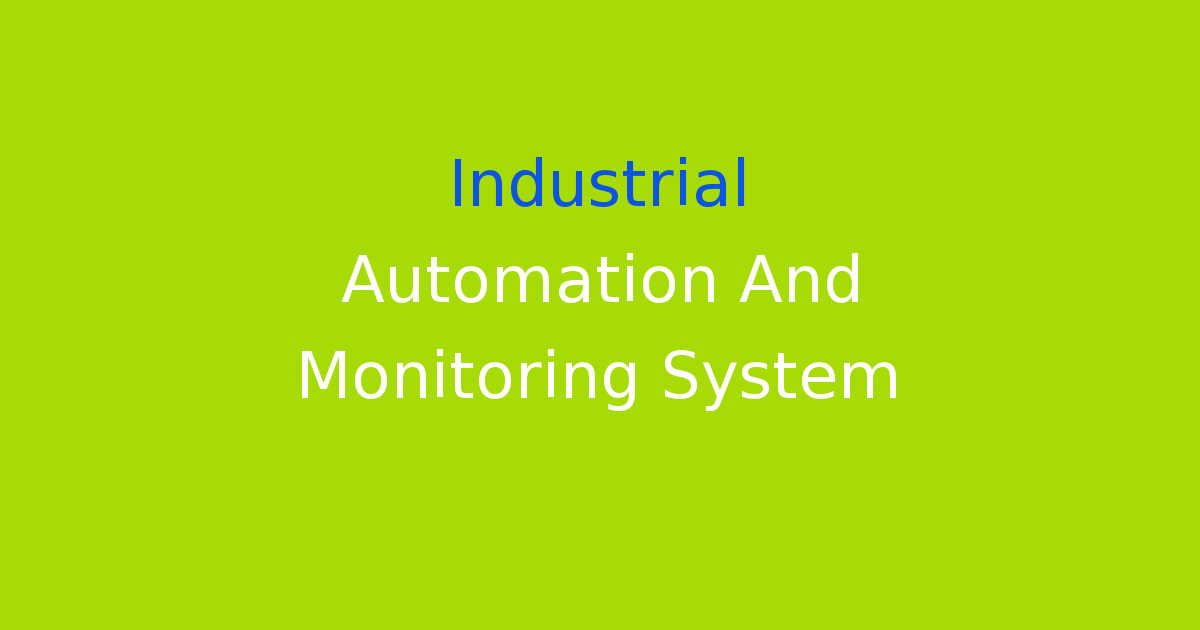System for the automation and monitoring of industrial processes.
Industrial Automation and Monitoring System
Introduction
In today’s fast-paced industrial world, automation plays a crucial role in increasing efficiency, reducing costs, and improving overall productivity. Industrial automation and monitoring systems are essential for monitoring and controlling various processes in industries such as manufacturing, energy, and transportation. These systems help in streamlining operations, reducing manual labor, and ensuring consistency in product quality. In this project, we aim to design and implement an advanced industrial automation and monitoring system to address the limitations of existing systems.
Problem Statement
The existing industrial automation and monitoring systems often lack the necessary features and capabilities to meet the growing demands of modern industries. These systems are sometimes outdated, inefficient, and costly to maintain. Moreover, manual intervention is required for monitoring and controlling different processes, leading to errors and inconsistencies in output. There is a need for a more robust and intelligent system that can automate processes, provide real-time monitoring, and improve overall efficiency.
Existing System
The current industrial automation and monitoring systems typically consist of PLCs (Programmable Logic Controllers), SCADA (Supervisory Control and Data Acquisition) systems, and sensors. While these systems have been effective in automating certain processes, they have limitations in terms of flexibility, scalability, and real-time monitoring capabilities. PLCs are limited in terms of programming capabilities and can be expensive to upgrade. SCADA systems provide a visual interface for monitoring, but lack advanced analytical features.
Disadvantages
Some of the disadvantages of the existing industrial automation and monitoring systems include:
– Limited integration capabilities with other systems.
– High costs associated with maintenance and upgrades.
– Lack of advanced analytical features for process optimization.
– Manual intervention required for troubleshooting and monitoring.
– Limited scalability to accommodate growing industrial demands.
Proposed System
In this project, we propose to develop an advanced industrial automation and monitoring system that integrates PLCs, SCADA systems, and sensors with artificial intelligence and machine learning algorithms. The proposed system will have the following features:
– Real-time monitoring of processes with advanced analytics.
– Autonomous decision-making capabilities for process optimization.
– Integration with IoT (Internet of Things) devices for data collection.
– Remote access and control of industrial processes.
– Scalability to accommodate future industrial requirements.
Advantages
Some of the advantages of the proposed industrial automation and monitoring system include:
– Improved operational efficiency and productivity.
– Reduced maintenance costs with predictive maintenance capabilities.
– Enhanced product quality and consistency.
– Real-time monitoring and control of industrial processes.
– Increased flexibility and scalability for future growth.
Features
The key features of the proposed industrial automation and monitoring system are as follows:
– AI-powered predictive maintenance for proactive equipment maintenance.
– Real-time data visualization and analytics for process optimization.
– Integration with cloud-based platforms for remote access and monitoring.
– Machine learning algorithms for autonomous decision-making.
– Scalable architecture to accommodate growing industrial needs.
Conclusion
In conclusion, industrial automation and monitoring systems are essential for modern industries to improve efficiency, reduce costs, and ensure consistent product quality. The proposed system aims to address the limitations of existing systems by integrating advanced technologies such as artificial intelligence and machine learning. By developing a more intelligent and flexible system, we can pave the way for the future of industrial automation.

